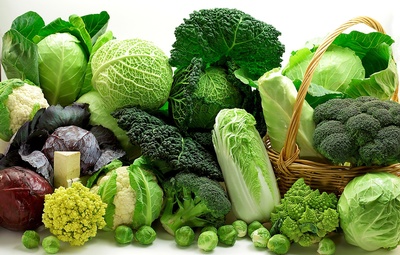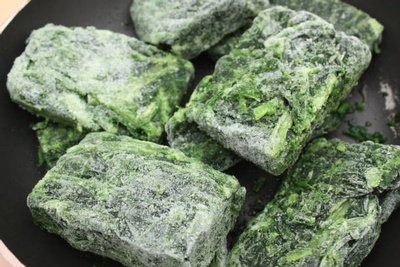Thank you to Nourishing Literacy (NL) team member Carolyn for writing this blog post! In addition to sharing her experience and findings, Carolyn has included some of the activities and approaches that we use in NL. The NL team enjoys providing interactive food info and ideas that spark curiosity and are inclusive to all ages and skills. Leafy green vegetables are available in different sizes, textures, tastes, and shades. They can be eaten raw or cooked, and can be prepared with or without the use of sharp tools. How do you enjoy eating greens?
__________________________________________________________________________________________________________________________________________________
Greens: Super Food & Library Resources
"The best comfort food will always be greens, cornbread, and fried chicken."
- Maya Angelou, in Redbook magazine
Who knew something so good for you could also be comfort food? Perhaps we should all take a cue from Maya Angelou and reconsider the wonder of greens. Leafy greens are high in fiber, low in fat, and packed with vitamins and minerals. Leafy greens also contain flavonoids and phytochemicals, which are chemicals produced by plants that can help to protect the body from toxins, boost the immune system, and minimize inflammation in the body, among other health benefits. Together these elements make greens a "superfood"—a word that is sometimes used for foods that are especially nutrient-rich. Prized for their many health benefits, leafy greens do so much for us, including:
- Improve the circulation of blood, which helps organs and muscles to function well
- Lower cholesterol, which helps prevent heart disease
- Help prevent cancer, a group of diseases characterized by the division, growth, and spread of old, damaged, or abnormal cells.
Perhaps you are someone who already enjoys "eating your greens!" or maybe you need a little extra support and encouragement. For more inspiration, head on over to our catalog, where you’ll find a bounty of resources and inspiration. Below is a starting list featuring information, recipes, and stories of this incredible power food.
Bring Me Some Apples and I'll Make You a Pie: A Story about Edna Lewis is a children’s book about the famed African American chef, teacher, and author. A pioneer of farm-to-table and natural foods, as well as an award-winning chef who began her career in the 1940s when the field was dominated by men, Edna Lewis was also known for her love of greens. The book captures Lewis’ Southern roots through folk lyrics and watercolor illustrations of planting, growing, and harvest, and includes five recipes designed for children. For advanced readers looking to dive deeper into Lewis’ life, see The Taste of Country Cooking, her memoir with recipes, including one for steamed lambs quarters, an edible weed that grows wild in Philadelphia.
Bryant Terry visited Nourishing Literacy in early 2020, and he had the whole room laughing and dancing as they prepared and ate a vegan feast of sautéed turnip greens with penne alongside quick-sautéed turnip stems. In Vegetable Kingdom: The Abundant World of Vegan Cooking, the award-winning chef and food justice advocate shares 100 recipes designed to make vegan cooking approachable and fun, as well as a playlist of songs to accompany each dish. Cabbage, parsley, spinach, and a variety of dark leafy greens take center stage in the Leaves section.
Food writer and critic Anita Loh-Yien Lau notes that "food is what holds the Asian family together," in Asian Greens. With her comprehensive overview of bok choy, kohlrabi, lemongrass, and more, Lau aims to demystify produce that may be less familiar to audiences outside Asia. The book features simple recipes with minimal ingredients, as well as tips for selecting, storing, and cooking Asian greens.
Greens + Grains: Recipes for Deliciously Healthful Meals includes 45 ways to pair greens with grains to create tasty, healthy meals. Food writer Molly Watson shares practical advice for choosing and using greens ranging from spinach to stinging nettle, alongside creative recipes that can be prepared quickly.
Greens Across Tables
According to Wikipedia, there are nearly 1000 species of plants with edible leafy greens. This abundance yields an incredible array of dishes, many of which you can find right here in Philadelphia’s culturally rich neighborhoods and restaurants.
Versatile and long-lasting, cabbage is a staple the world over with good reason. In cultures descending from Eastern Europe, boiled cabbage leaves are stuffed with meats, cheeses, and grains. Korean kimchi—fermented cabbage combined with vegetables and spices—abounds in Philadelphia’s Asian markets and restaurants. Popular for its digestive and immune-boosting properties, kimchi is adaptable, can be made from scratch at home, and can keep for a long time in the fridge.
Frisée is a pale leafy green whose winding tendrils give it the look of a wild head of curls. Frisée is a classic dish in French bistro restaurants that can be recreated and updated at home. If frisée is not available, other crunchy and fun-to-eat greens include romaine lettuce and baby bok choy. Frisée has a slightly bitter taste that is also found in leafy greens like radicchio, arugula, and broccoli rabe.
Black-eyed peas and collard greens are a staple of Southern cooking and a New Year’s Day tradition for their association with luck and prosperity. Collard greens are also quite adaptable; check out this recent Washington Post article for more approaches to collards, including using them as wraps, sauteeing them in a hash, and tearing them with your hands for a soup.
Recipe & Hands-On Tips: Green Soup!
Julee Rosso and Sheila Lukins’ The Silver Palate Cookbook is considered a classic from the 1980s. While some of the recipes are more complex, their Sweet Pea and Spinach Soup is a great fit for cooks of all ages.
Spinach can be found prewashed as baby leaves or in a bunch with the stems attached. If you’d like to use fresh spinach in bunch form, you can store washed greens in the fridge for about a week. One trick for washing fresh greens is to give them a bath. Fill a sink or large bowl with cool water, drop the greens in, and move them around with your fingers to loosen any dirt. Shake and squeeze the water out, then roll inside a towel to dry completely. Place the washed and dried greens in a bag with a paper towel to absorb moisture.
If you opt for frozen spinach, squeezing all the water out once you have defrosted the spinach is a workout for hands and biceps alike! If you struggle with this step, allow extra time for defrosting, and use a wooden spoon or other large utensil to press water from the greens over a colander or strainer. Young cooks will get a kick out of squeezing every last bit of water from the defrosted greens, stirring the pot, keeping time, and seasoning the final product with salt and pepper.
You can find the full recipe online or through the Free Library, and a slightly modified version is below.
Minted Sweet Pea and Spinach Soup
Ingredients
- 2 Tablespoons butter or oil
- 1 yellow onion, chopped
- 10 oz. frozen spinach, defrosted or 2 to 3 cups chopped dark greens
- 10 oz. frozen peas, shelled edamame, or lima beans defrosted
- 1 tsp. salt
- ¼ tsp. pepper
Steps
- Melt the butter or oil in a large pot over low heat. Add the chopped onions, cover, and cook until tender and lightly colored (about 25 minutes).
- Meanwhile, if using frozen spinach, drain the spinach and squeeze out the excess liquid.
- Pour 3 cups water into the pot, stir in the peas or beans and spinach or other chopped dark greens, and bring to a boil. Reduce the heat and simmer, partially covered, until the peas are really tender (about 20 minutes).
- Optional: puree soup in a blender or food processor, in batches if necessary. Return the puréed soup to the pot.
- Season with salt and pepper, taste and adjust seasoning, if desired.
Art With Greens: Collage
Materials: Discarded newspaper(s) or magazine(s), scissors, paper, glue, or tape
Collage is an approach to art in which different pieces or elements are put together to create a new whole. In this activity, leafy greens serve as the inspiration for creating a collage—an art activity suitable for all ages.
Collect images of greens and grasses from discarded magazines and newspapers. Once you’ve gathered several pictures, use scissors to cut them into interesting shapes and arrange them together into a design of your choosing. Glue or tape all your pieces to a sheet of paper to finalize your collage.
Community Resources
The Philadelphia Orchard Project plants and supports community orchards in formerly vacant lots, schoolyards, and other urban spaces in areas where people experience limited access to fresh produce. Their Weed Identification Guide is a fantastic resource for gardeners, as well as anyone interested in getting to know the ground beneath their feet. Philly is home to many edible weeds—greens that grow wild and can be safely eaten.
We hope the resources and ideas above will inspire you to take another look at this superfood and to find a new variety or a way of eating them that might elevate greens to your list of comfort foods.
What is your favorite way to prepare and eat greens? Let us know in the comments!
___________________________________________________________________________________________________________________________________________________
Nourishing Literacy offers food, literacy, wellness, and life skills activities and programs to youth and intergenerational community members. To learn more about the Culinary Literacy Center, please visit our website or connect with us through Instagram and Facebook.
Have a question for Free Library staff? Please submit it to our Ask a Librarian page and receive a response within two business days.



